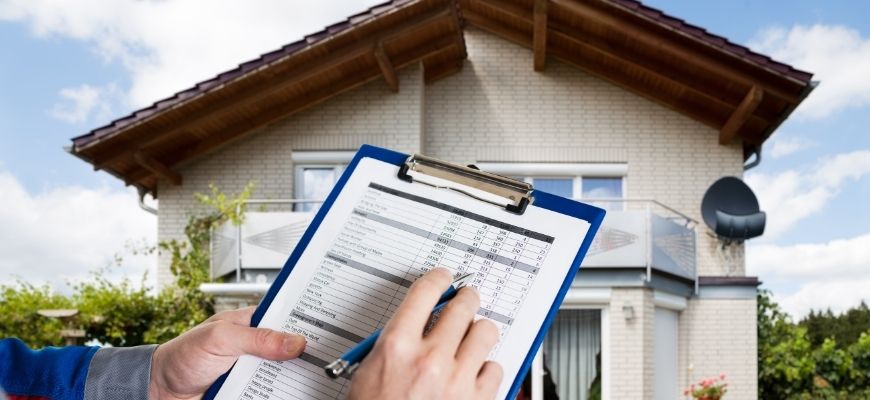What Is Included in an Extensive Residential Property Evaluation Process?
A detailed residential property assessment process is essential for ensuring and guarding investments safety and security. It includes a meticulous examination of architectural integrity, electrical systems, pipes, and Heating and cooling devices, amongst other important components. What, after that, are the most crucial facets that can make or break a residential property analysis?
Overview of Home Assessment

The assessment encompasses numerous vital areas, consisting of the exterior and interior components, systems such as pipes and electric, and any visible structural components (Phoenix property inspections). During the process, the assessor records the condition of these elements, seeking indicators of wear, damages, or potential threats
A comprehensive residential property inspection not only assists possible buyers make informed choices but additionally helps present proprietors in understanding required repair work or upkeep jobs. By providing a thorough record of searchings for, the evaluation makes it possible for stakeholders to prioritize problems that may call for prompt interest or might affect future financial investment.
Furthermore, a reliable assessment process abides by established market standards and standards, making sure a constant and dependable analysis. On the whole, the home examination procedure is an essential device in property purchases, advertising transparency and guarding both purchaser and vendor interests.
Architectural Evaluation

Throughout the examination, professionals analyze numerous elements, including the foundation, framing, walls, and roof covering systems. They look for signs of settling or moving, such as cracks in wall surfaces or uneven floors, which can signify underlying problems. The assessment also entails analyzing the quality of construction products and techniques used, guaranteeing conformity with building ordinance and criteria.
Furthermore, assessors may look for indicators of wetness breach, which can result in timber rot and mold and mildew, more compromising structural integrity. They likewise evaluate load-bearing components to guarantee they can properly sustain the weight of the structure and its components.
Eventually, a comprehensive structural examination gives indispensable understandings for prospective purchasers and house owners, enabling them to make educated decisions regarding residential property investments and essential maintenance. By identifying architectural concerns early, proprietors can deal with issues proactively, preserving the long-lasting value and safety of the residential or commercial property.
Electric System Assessment
A reliable electrical system assessment is essential in the home assessment procedure, as it assesses the safety and security, performance, and conformity of a building's electrical infrastructure - Home inspections. This analysis generally encompasses a comprehensive exam of the primary electrical panel, breaker, and wiring systems. Examiners search for signs of wear, deterioration, or damage that may compromise safety and security
The analysis includes testing for appropriate grounding and bonding, ensuring that the electrical system is correctly linked to stop electrical shock or fire risks. Assessors likewise analyze the capacity of the electrical system to manage the present lots, recognizing any type of possible overwhelming concerns that can lead to interruptions or failings.
On top of that, the assessment checks for click here to find out more the visibility of GFCI (Ground Fault Circuit Interrupter) and AFCI (Arc Mistake Circuit Interrupter) gadgets in suitable places, which are crucial for protecting against electrical shocks and protecting against fires. Conformity with neighborhood building ordinance and laws is also validated to guarantee that any setups or adjustments fulfill safety and security requirements.

Plumbing and HVAC Checks
Adhering to the electrical system evaluation, the pipes and a/c checks are important parts of the residential property evaluation process. These evaluations guarantee that the necessary systems of the property are functioning appropriately and securely, thus protecting the investment and wellness of the residents.
Throughout pipes examinations, experts examine the problem of pipes, fixtures, and water drainage systems. They inspect for leakages, rust, and any kind of indications Check This Out of water damages that might suggest bigger issues. The efficiency of water heating units is likewise evaluated to ensure they satisfy existing criteria and give appropriate warm water supply.
The cooling and heating checks include a complete evaluation of heating, air flow, and air conditioning systems. Inspectors will assess the functional effectiveness of these systems, ensuring that they keep a comfortable indoor environment. This consists of checking the heating system, air conditioner, thermostat, and ductwork functionality. Additionally, the examiner will certainly look for any kind of indicators of wear or prospective security hazards, such as carbon monoxide leakages in furnace.
Outside and Inside Inspections
Outside and indoor inspections are crucial aspects of the residential property examination procedure, providing a detailed introduction of a building's problem. The exterior inspection involves reviewing architectural components such as the roofing, house siding, foundation, and home windows.
The interior examination concentrates on the condition of living rooms, including walls, floor covering, and ceilings. Examiners examine the performance of windows, doors, and home appliances, while additionally examining for indicators of dampness or architectural concerns. Electrical systems, pipes components, and cooling and heating systems are looked at to ensure they remain in working order, certified with building regulations, and devoid of safety and security risks.
Both evaluations finish in an in-depth report that highlights important findings and suggestions for fixings or additional examinations. This twin method ensures that potential purchasers or owners are totally informed concerning the building's strengths and weaknesses, allowing them to make educated decisions.
Conclusion
Finally, a comprehensive building evaluation process incorporates a considerable assessment of structural integrity, electric systems, plumbing, and heating and cooling devices, alongside in-depth exterior and interior inspections - Phoenix property inspections. By systematically analyzing each important element, prospective safety and security risks and compliance with market criteria and neighborhood building ordinance can be identified. The resultant detailed record serves as an essential resource, equipping customers and property owners to make site link enlightened choices regarding property investments and upkeep, eventually improving security and worth
An extensive residential property examination process is vital for securing investments and making certain safety.During the examination, experts examine different elements, consisting of the foundation, framing, wall surfaces, and roof systems.An efficient electrical system analysis is crucial in the home inspection procedure, as it evaluates the security, functionality, and conformity of a structure's electric framework.Outside and indoor inspections are essential aspects of the property examination procedure, providing a comprehensive introduction of a residential property's condition.In final thought, a thorough property assessment process encompasses a substantial evaluation of structural stability, electrical systems, plumbing, and HVAC systems, alongside detailed exterior and interior examinations.